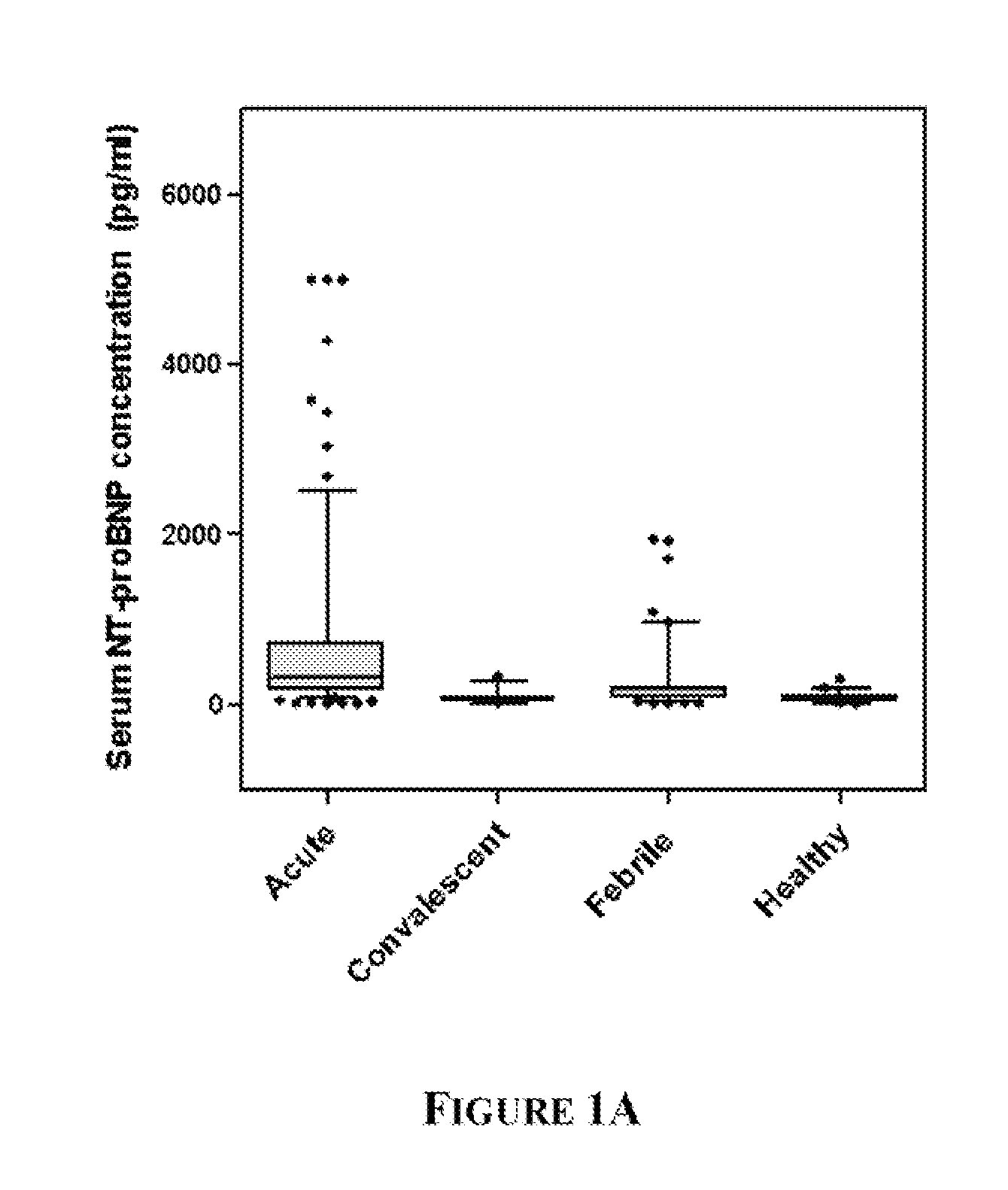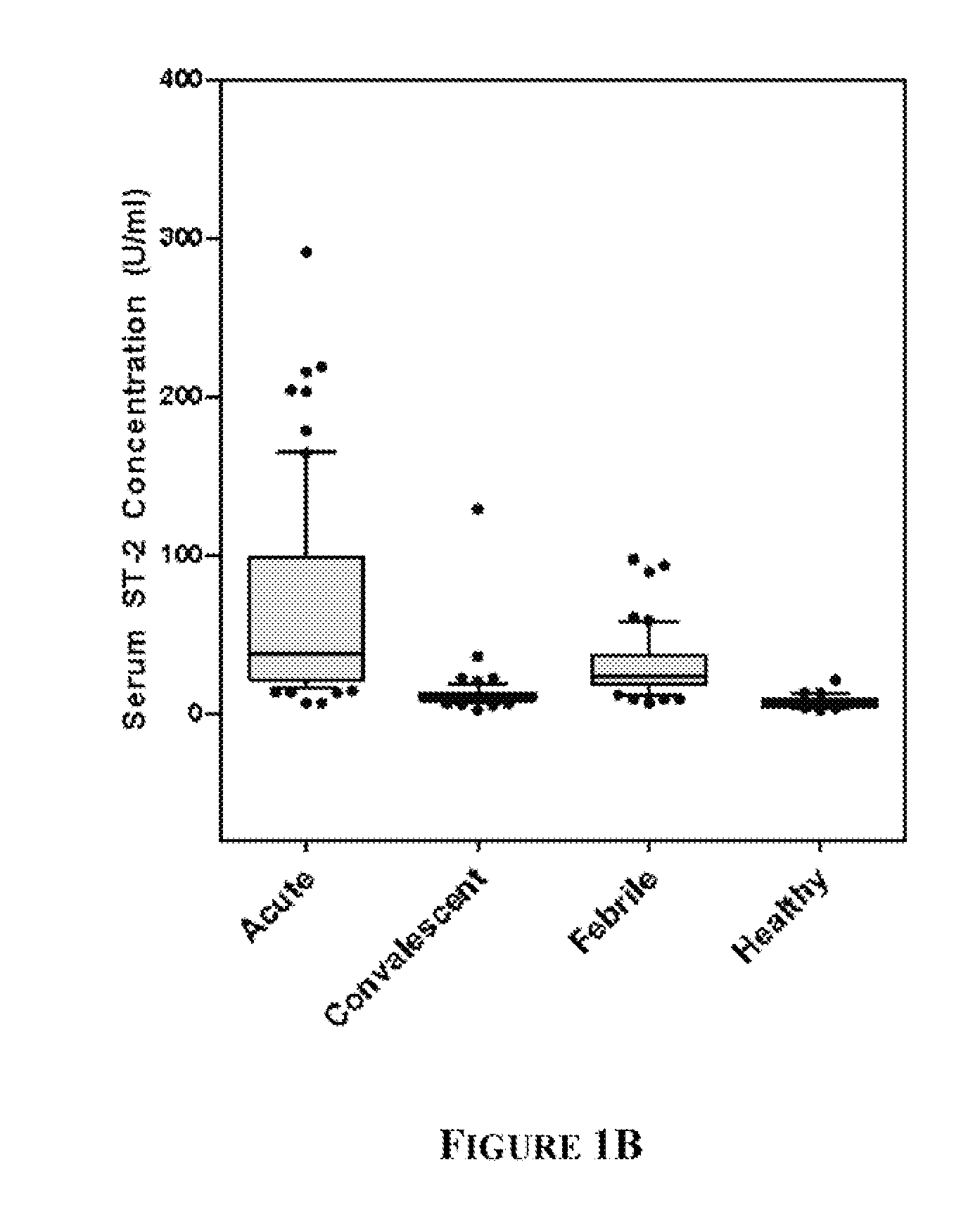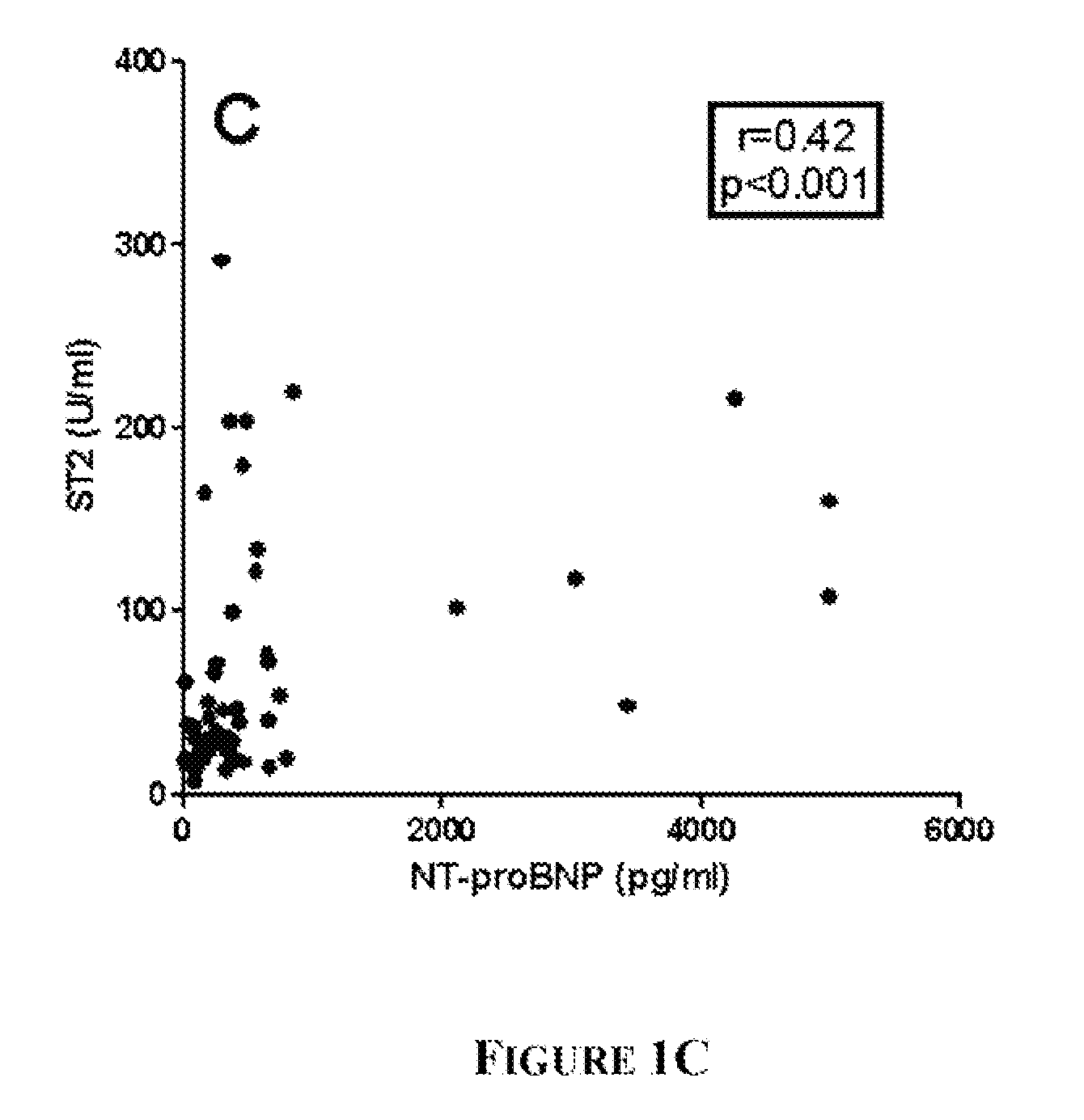Protein Biomarkers and Methods for Diagnosing Kawasaki Disease
a kawasaki disease and protein biomarker technology, applied in the field of kawasaki disease diagnosis, can solve the problems of increased risk of coronary aneurysm, heart damage and death, and significant risk of coronary artery disease in kd patients, and achieve the effect of increasing the accuracy of diagnosis
- Summary
- Abstract
- Description
- Claims
- Application Information
AI Technical Summary
Benefits of technology
Problems solved by technology
Method used
Image
Examples
example 1
NT-proBNP and ST2 as Indicators of Myocardial Strain in Acute Kawasaki Disease (KD)
Study Population and Sample Collection
[0087]KD patients (n=96), febrile controls (n=93), and healthy pediatric controls (n=50) were enrolled at Rady Children's Hospital, San Diego, Calif. after parental informed consent. The human subjects protocol was reviewed and approved by the Institutional Review Board at UCSD. All KD patients had fever and ≧4 of the 5 principal clinical criteria for KD (rash, conjunctival injection, cervical lymphadenopathy, changes in the oral mucosa, and changes in the extremities) or 3 criteria plus coronary artery abnormalities documented by echocardiography (Liu et al (2006) Curr Opin Microbiol. 9:312-9). All febrile control patients had nasopharyngeal and stool viral cultures. Controls classified as having acute adenoviral infection (n=14) had fever for at least 3 days, a negative throat culture for Group A β-hemolytic streptococcus (GABHS), and a positive nasopharyngeal (...
example 2
Transcript Abundance Profiles Distinguish Kawasaki Disease from Other Rash / Fever Illnesses
[0096]In this study, patterns of whole blood gene expression in acute KD patients, and patients with illnesses of similar clinical presentation and well-defined etiology were compared. Patterns of gene expression and corresponding biological programs that differed between KD and the other illnesses were identified, which were able to distinguish between KD and adenovirus infection on the basis of gene expression patterns. The results from this study can be exploited to devise a diagnostic test for KD that may lead to more accurate and timely diagnosis of these patients.
[0097]To identify unique features of KD, gene expression patterns in the blood of 23 children with acute KD and 18 age-matched febrile controls were compared. Genes associated with platelet and neutrophil activation were expressed at higher levels in KD patients than patients with adenovirus infections or systemic toxic drug reac...
example 3
Inflammatory Biomarkers as Indicators in Acute Kawasaki Disease (KD)
[0117]Plasma samples from twenty-eight (28) acute Kawasaki Disease subjects and twenty-eight (28) age- and sex-matched febrile control children were analyzed using the Luminex bead system (RulesBasedMedicine, Inc.) for eighty-nine (89) analytes in pathways related to inflammation. Of the eighty-nine (89) analytes, thirteen (13) analytes showed significantly different levels between acute Kawasaki Disease and febrile control subjects. The median and 95% CI for the two groups are shown for each analyte in these graphs. (FIGS. 7-19).
[0118]The thirteen analytes showing significantly different levels in acute Kawasaki Disease are alpha-1 antitrypsin, calcitonin, CD40, C reactive protein, EN-RAGE, erythropoietin, fibrinogen, ICAM-1, IL-6, MIP-1 alpha, myeloperoxidase, TIMP-1, and VEGF.
PUM
| Property | Measurement | Unit |
|---|---|---|
| swelling | aaaaa | aaaaa |
| concentrations | aaaaa | aaaaa |
| concentration | aaaaa | aaaaa |
Abstract
Description
Claims
Application Information
 Login to View More
Login to View More - R&D
- Intellectual Property
- Life Sciences
- Materials
- Tech Scout
- Unparalleled Data Quality
- Higher Quality Content
- 60% Fewer Hallucinations
Browse by: Latest US Patents, China's latest patents, Technical Efficacy Thesaurus, Application Domain, Technology Topic, Popular Technical Reports.
© 2025 PatSnap. All rights reserved.Legal|Privacy policy|Modern Slavery Act Transparency Statement|Sitemap|About US| Contact US: help@patsnap.com



